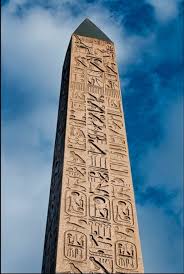Stamp: Moscow University and Obelisk "To the Stars" (Soviet Union, USSR 1961)
Moscow University and Obelisk "To the Stars" (Soviet Union, USSR 1961)
23 September (Soviet Union, USSR ) within release 22nd Communist Party Congress goes into circulation Stamp Moscow University and Obelisk "To the Stars" face value 3 Russian kopek
| Stamp Moscow University and Obelisk "To the Stars" in catalogues | |
|---|---|
| Michel: | Mi: SU 2532Ab |
Stamp is horizontal format.
Not listed in SolovievAlso in the issue 22nd Communist Party Congress:
- Stamp - Moscow University and obelisk "To the stars" face value 3;
- Stamp - Combine-harvester face value 4;
- Stamp - Moscow University and Obelisk "To the Stars" face value 3;
Stamp Moscow University and Obelisk "To the Stars" it reflects the thematic directions:
A building or edifice is a structure with a roof and walls standing more or less permanently in one place, such as a house or factory. Buildings come in a variety of sizes, shapes and functions, and have been adapted throughout history for a wide number of factors, from building materials available, to weather conditions, to land prices, ground conditions, specific uses and aesthetic reasons. Buildings serve several needs of society – primarily as shelter from weather, security, living space, privacy, to store belongings, and to comfortably live and work. A building as a shelter represents a physical division of the human habitat (a place of comfort and safety) and the outside (a place that at times may be harsh and harmful).
Communism (from Latin communis, 'common, universal') is a left-wing to far-left sociopolitical, philosophical, and economic ideology within the socialist movement, whose goal is the creation of a communist society, a socioeconomic order centered around common ownership of the means of production, distribution, and exchange that allocates products to everyone in the society based on need. A communist society would entail the absence of private property and social classes, and ultimately moneyand the state (or nation state).
A conference is a meeting, often lasting a few days, which is organized on a particular subject, or to bring together people who have a common interest. Conferences can be used as a form of group decision-making, although discussion, not always decisions, is the primary purpose of conferences. The term derives from the word confer.
An obelisk is a tall, slender, tapered monument with four sides and a pyramidal or pyramidion top. Originally constructed by Ancient Egyptians and called tekhenu, the Greeks used the Greek term obeliskos to describe them, and this word passed into Latin and ultimately English. Though William Thomas used the term correctly in his Historie of Italie of 1549, by the late sixteenth century (after reduced contact with Italy following the excommunication of Queen Elizabeth), Shakespeare failed to distinguish between pyramids and obelisks in his plays and sonnets. Ancient obelisks are monolithic and consist of a single stone; most modern obelisks are made of several stones.
A university (from Latin universitas 'a whole') is an institution of higher (or tertiary) education and research which awards academic degrees in several academic disciplines. University is derived from the Latin phrase universitas magistrorum et scholarium, which roughly means "community of teachers and scholars". Universities typically offer both undergraduate and postgraduate programs.




